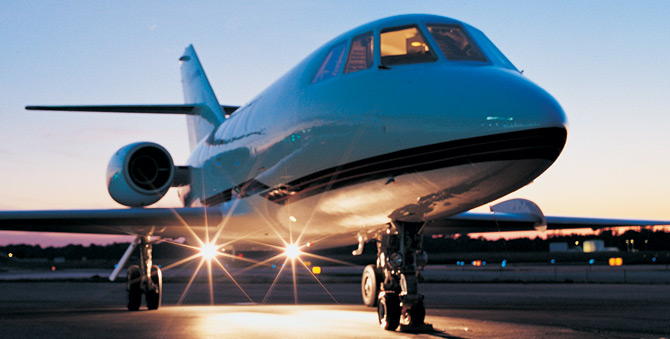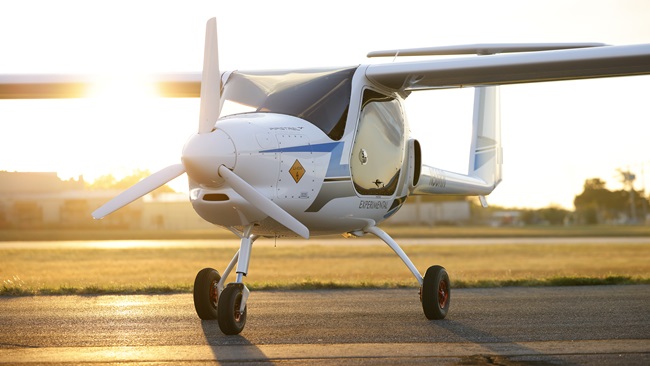
June 2012
Turbine Pilot Contents
- Quick Look Dassault Falcon 20.
- System Synopsis Power control units.
- What's Your Type? Type rating basics.
- VNAV 101 Vertical navigation in light jets.
The Dassault Falcon 20 is a first-generation, twin-engine business jet that was developed in France in the early 1960s and remained in production until 1983. The all-metal, low-wing monoplane features rear-mounted engines; a swept, full-cantilever wing; cruciform tail; and a retractable dual-wheel tricycle landing gear. Typically, the aircraft accommodates between eight and 10 passengers, plus a crew of two.
Originally, the Falcon business jet was known as the Mystère 20, and the prototype, which first flew in May 1963, was powered by two 3,300-pound-thrust Pratt & Whitney JT12A-8 turbojet engines. The first production Falcon 20, powered by two 4,125-pound-thrust General Electric CF700-2C turbofans, flew for the first time in January 1965 and was certificated by the FAA and French authorities that June.
Because the United States represented the largest market for new, turbofan-powered business jets, Dassault appointed a respected American company—Pan American World Airways—to market its new corporate jet in the region. Pan Am’s Business Jet Division sold the aircraft in North America under the name Fan Jet Falcon or Falcon 20.
Within a few years, Dassault introduced a series of improved models with more powerful engines, along with other enhancements.
The Falcon 20C featured increased fuel capacity, while the 20D had even greater fuel capacity—along with CF700-2D powerplants rated at 4,250 pounds of thrust. The 20E and F models incorporated more powerful CF700-2D-2 engines (rated at 4,500 pounds of thrust), as well as new high-lift devices—leading-edge flaps—to improve takeoff and landing performance.
Falcon 20F-5
- Engines: Two Honeywell TFE731-5BRs, 4,750 lbst each
- Seats up to 12
- Max takeoff weight: 29,100 pounds
- Cruise speed: 417 knots
- Balanced field length: 5,170 feet
- Range: 1,920 nm
- Wingspan: 53 feet, 5 inches
- Length: 56 feet, 3 inches
- Height: 17 feet, 8 inches
The Falcon 20G, which was powered by Garrett AiResearch ATF3 turbofans, was designed to meet a U.S. Coast Guard requirement for a new medium-range surveillance aircraft. Beginning in 1977, the service bought 41 of these jets, which were designated HU–25A Guardian.
The Falcon 20 also was used as a cargo aircraft. Federal Express carried its first packages aboard a Falcon on April 17, 1973. Within a decade, the overnight shipper was using 33 of the twinjets in its air express network.
The Falcon 20 got a new lease on life when the aircraft was retrofitted with more powerful and more efficient Garrett TFE731 turbofans under a Dassault service bulletin. Aircraft equipped with these newer powerplants were designated Falcon 20C-5, D-5, E-5, and F-5, respectively.
In addition, Garrett started a program in the mid-1980s to replace the Falcon’s original GE engines with its new 4,400-pound-thrust TFE731-5AR, and later, 4,750-pound-thrust -5BR engines, which nearly doubled the aircraft’s range and markedly improved its performance. Garrett and its successor companies performed approximately 125 such conversions. Many of these reengined airplanes also were fitted with new avionics.
Approximately 470 Falcon 20s were built during the aircraft’s long production run, but only about three dozen are on the market today. Early model Falcon 20Cs can cost as little as $340,000, while the asking price for Falcon 20-5 airplanes runs between $650,000 and $2 million.
Robert A. Searles is a writer and editor specializing in commercial, military, and general aviation.


